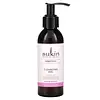What's inside
What's inside
 Key Ingredients
Key Ingredients

 Benefits
Benefits

 Concerns
Concerns

 Ingredients Side-by-side
Ingredients Side-by-side

Water
Skin ConditioningAloe Barbadensis Leaf Juice
Skin ConditioningCocamidopropyl Betaine
CleansingDecyl Glucoside
CleansingPEG-150 Pentaerythrityl Tetrastearate
EmulsifyingCucumis Sativus Fruit Extract
EmollientChamomilla Recutita Flower Extract
MaskingCamellia Sinensis Leaf Extract
AntimicrobialPersea Gratissima Oil
Skin ConditioningRosa Canina Fruit Oil
EmollientGlycerin
HumectantVanillin
MaskingVanilla Planifolia Fruit Extract
Skin ConditioningPhenoxyethanol
PreservativeBenzyl Alcohol
PerfumingWater, Aloe Barbadensis Leaf Juice, Cocamidopropyl Betaine, Decyl Glucoside, PEG-150 Pentaerythrityl Tetrastearate, Cucumis Sativus Fruit Extract, Chamomilla Recutita Flower Extract, Camellia Sinensis Leaf Extract, Persea Gratissima Oil, Rosa Canina Fruit Oil, Glycerin, Vanillin, Vanilla Planifolia Fruit Extract, Phenoxyethanol, Benzyl Alcohol
Water
Skin ConditioningSodium Laureth Sulfate
CleansingOlive Oil PEG-7 Esters
EmollientSodium PEG-7 Olive Oil Carboxylate
EmulsifyingCoco-Betaine
CleansingPotassium Lactate
BufferingPEG-120 Methyl Glucose Dioleate
EmulsifyingSodium Citrate
BufferingLactic Acid
BufferingLavandula Angustifolia Oil
MaskingGlycerin
HumectantSimmondsia Chinensis Seed Oil
EmollientRibes Nigrum Seed Oil
EmollientOrmenis Multicaulis Oil
MaskingChamomilla Recutita Flower Oil
MaskingGlycyrrhiza Glabra Root Extract
BleachingCarum Petroselinum Seed Oil
MaskingMethylchloroisothiazolinone
PreservativeMethylisothiazolinone
PreservativeLinalool
PerfumingLimonene
PerfumingWater, Sodium Laureth Sulfate, Olive Oil PEG-7 Esters, Sodium PEG-7 Olive Oil Carboxylate, Coco-Betaine, Potassium Lactate, PEG-120 Methyl Glucose Dioleate, Sodium Citrate, Lactic Acid, Lavandula Angustifolia Oil, Glycerin, Simmondsia Chinensis Seed Oil, Ribes Nigrum Seed Oil, Ormenis Multicaulis Oil, Chamomilla Recutita Flower Oil, Glycyrrhiza Glabra Root Extract, Carum Petroselinum Seed Oil, Methylchloroisothiazolinone, Methylisothiazolinone, Linalool, Limonene
 Reviews
Reviews

Ingredients Explained
These ingredients are found in both products.
Ingredients higher up in an ingredient list are typically present in a larger amount.
Glycerin is already naturally found in your skin. It helps moisturize and protect your skin.
A study from 2016 found glycerin to be more effective as a humectant than AHAs and hyaluronic acid.
As a humectant, it helps the skin stay hydrated by pulling moisture to your skin. The low molecular weight of glycerin allows it to pull moisture into the deeper layers of your skin.
Hydrated skin improves your skin barrier; Your skin barrier helps protect against irritants and bacteria.
Glycerin has also been found to have antimicrobial and antiviral properties. Due to these properties, glycerin is often used in wound and burn treatments.
In cosmetics, glycerin is usually derived from plants such as soybean or palm. However, it can also be sourced from animals, such as tallow or animal fat.
This ingredient is organic, colorless, odorless, and non-toxic.
Glycerin is the name for this ingredient in American English. British English uses Glycerol/Glycerine.
Learn more about GlycerinWater. It's the most common cosmetic ingredient of all. You'll usually see it at the top of ingredient lists, meaning that it makes up the largest part of the product.
So why is it so popular? Water most often acts as a solvent - this means that it helps dissolve other ingredients into the formulation.
You'll also recognize water as that liquid we all need to stay alive. If you see this, drink a glass of water. Stay hydrated!
Learn more about Water